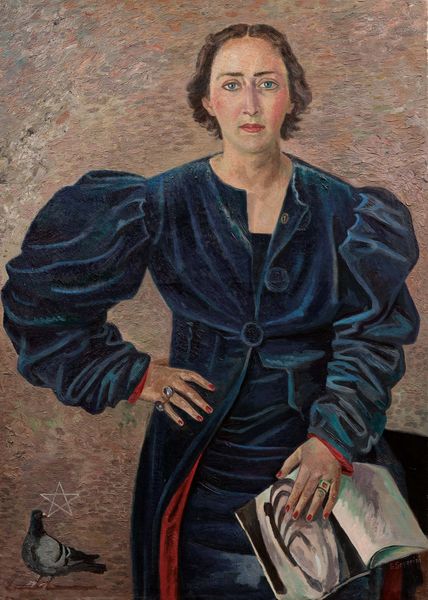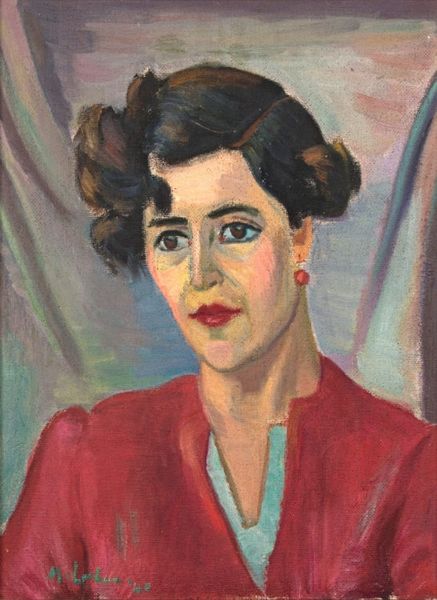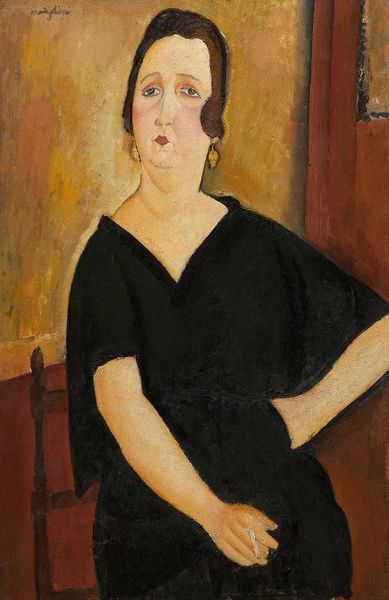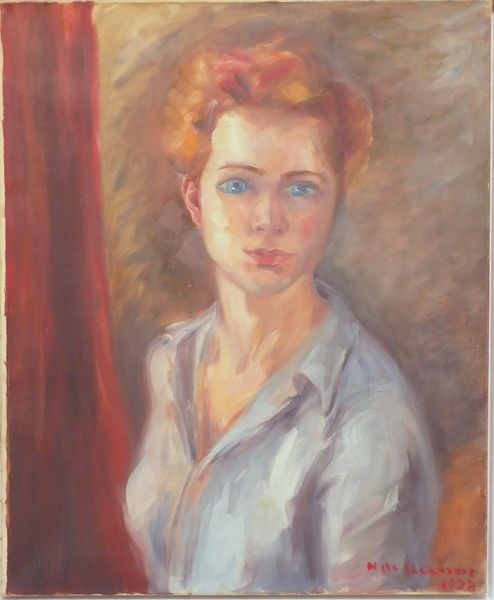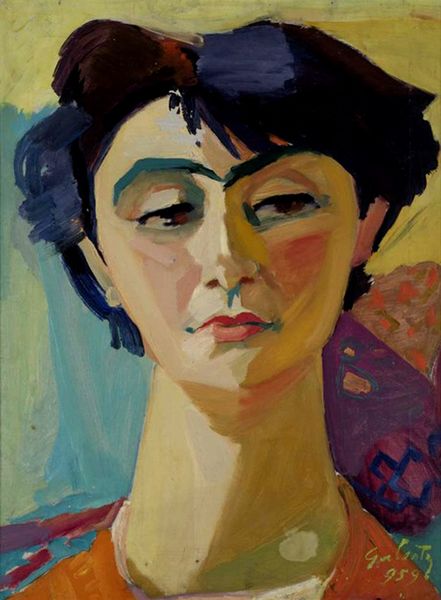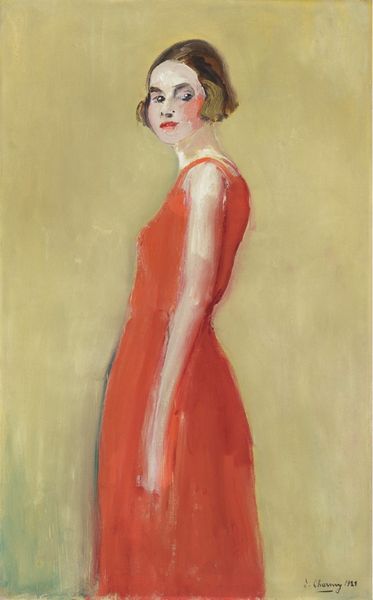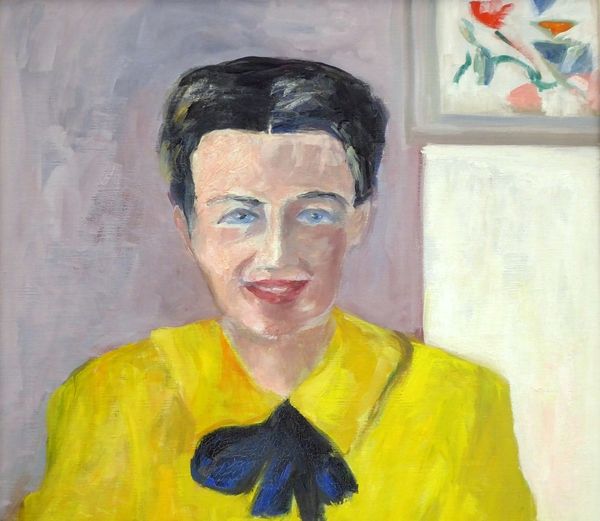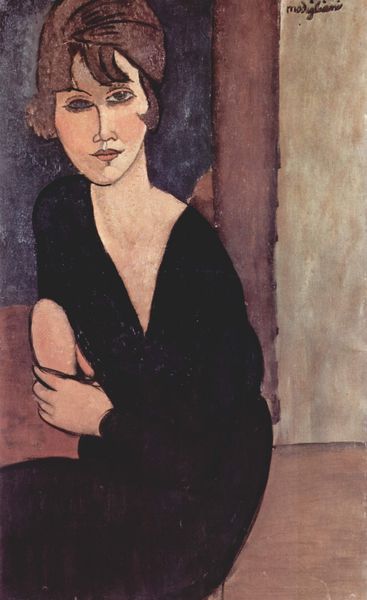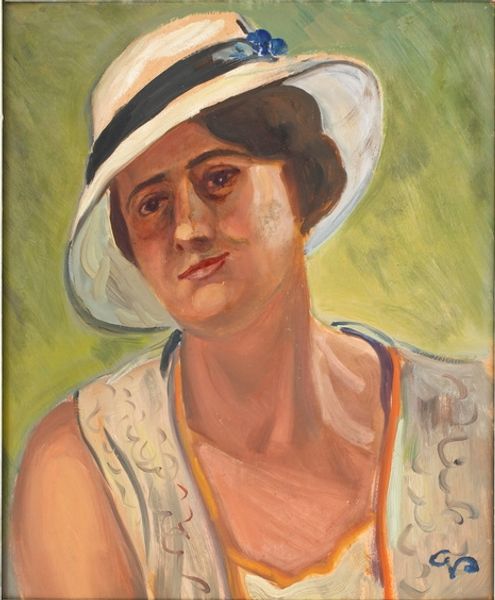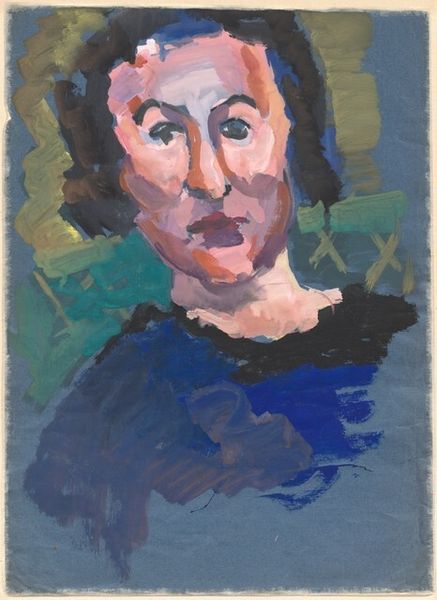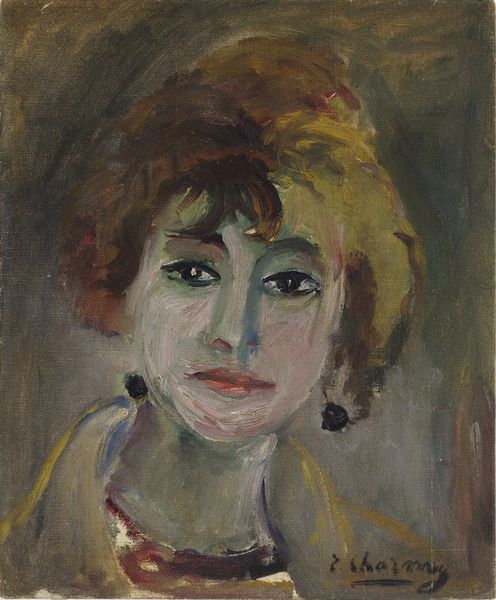
painting, oil-paint
#
portrait
#
self-portrait
#
painting
#
oil-paint
#
oil painting
#
expressionism
#
modernism
#
realism
Copyright: Vera Nedkova,Fair Use
Editor: This is Vera Nedkova's "Self Portrait," painted in 1928. It's oil on canvas, and I'm immediately struck by the direct gaze and somewhat somber mood. What do you see in this piece? Curator: I see a woman situating herself within a complex web of social expectations and personal agency. Considering this was painted in 1928, a period of significant change for women in Europe, how does Nedkova use the conventions of portraiture to both present and perhaps question her identity? Editor: I hadn't thought about it that way, but her direct gaze does feel like a statement. Almost defiant, even. Curator: Precisely. Think about the "New Woman" archetype that emerged in the early 20th century. This painting engages with ideas around female autonomy and self-representation. The somewhat muted color palette might reflect the societal constraints women still faced, even amidst these changes. Do you feel there is any vulnerability present alongside this defiance? Editor: I think so, yes. Something in the slightly uneven application of paint and maybe in the positioning of the mouth makes it feel more human. More relatable, even across almost a century. Curator: Exactly. It's about acknowledging both strength and vulnerability. Considering her background as a Bulgarian artist, it is fascinating how Nedkova navigates the constraints of gender and cultural expectations while establishing her artistic voice. Editor: It’s fascinating to see how art acts like a record of social change. Thank you. Curator: My pleasure. And remember, the artwork invites not only the observation but also the dialogue and intersectional reflection it can provoke.
Comments
No comments
Be the first to comment and join the conversation on the ultimate creative platform.
